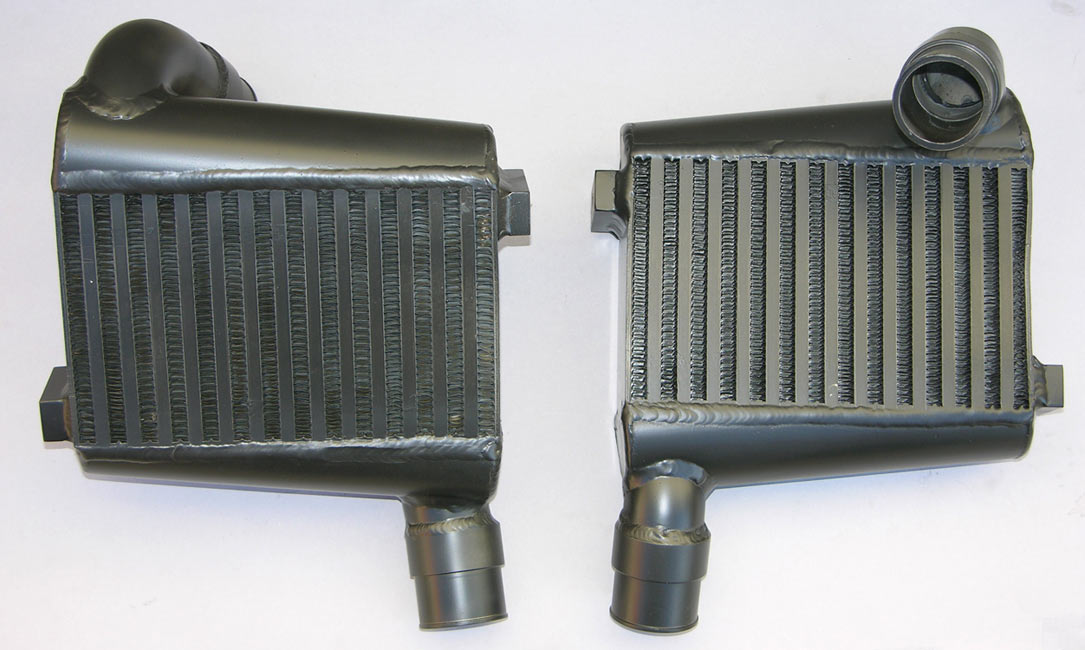RB Racing Intercoolers
Charge Cooling

RB Racing has been turbocharging vehicles since 1979 but is only since 1985 that we have employed charge air cooling, or is more commonly referred to as "intercooling", as prior to 1985 most of our applications involved draw through carburetion which precluded the use of intercoolers. For those of you who are new to intercooling you do not blow an air/fuel mixture through an intercooler because; (a) It's not safe to have an explosive mixture in an enclosed vessel and; (b) Intercoolers were meant to flow dry, not wet mixtures.
RSR Intercooler Cores
Intercoolers
are manufactured in one of two ways: Stacked Plate or Tube
construction. All RB Racing intercoolers are of the Stacked
Plate style
of construction. To simplify this choice: (a) Stacked Plate
designs are
more efficient, heavier, sturdier; (b) Tube designs are less
efficient,
lighter, less sturdy. As they say "two out of three ain't bad"
so we go
with the stacked plate design.
Design
considerations: Airflow needs to be considered in the
construction of
the intercooler inlet and outlets. Keep distances short.
Minimize
bends. Taper the hats downward from point of entry i.e. if you
blow
into one edge of the core taper the hat down to the other end
and if
you blow into the center taper it to both ends.
Don't construct hats so
some passages are partially blocked because there aren't that
many of
them.
Calculating Intercooler Efficiency
To see what the effect of boost pressure, ambient temperature, and intercooler efficiency is on the temperature of the air entering your motor we have written up the following calculator. Simply enter the three variables and the calculator will display the results in a new pop-up window.